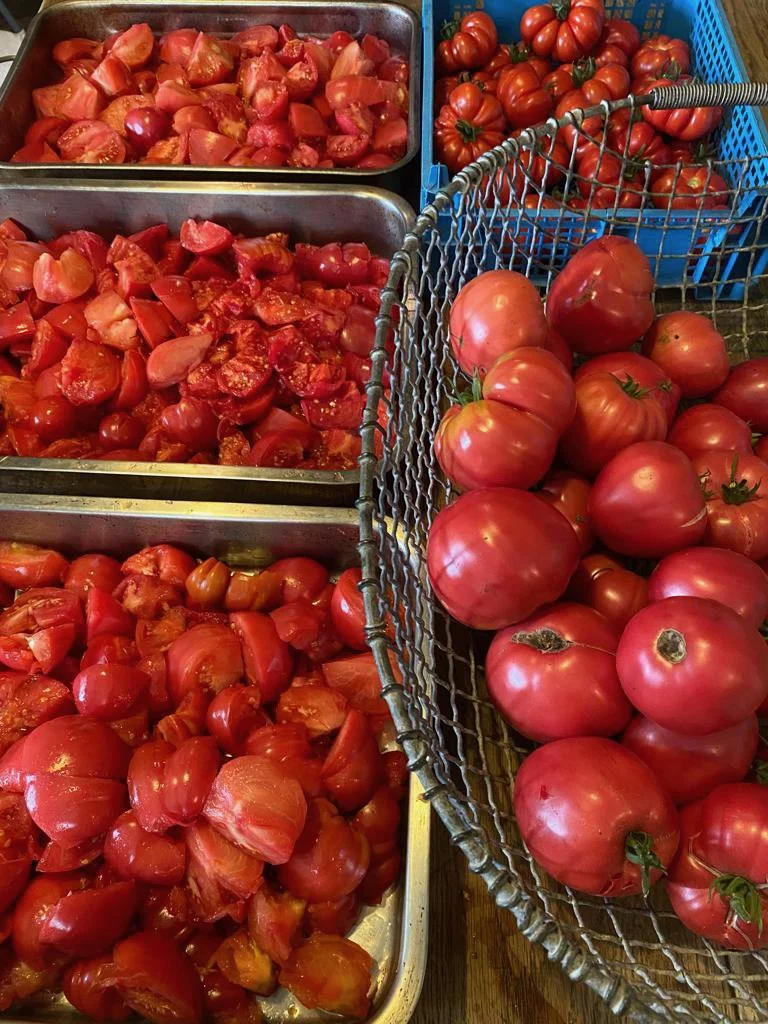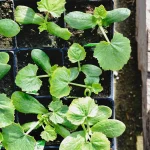TOMATOES
Tomatoes are coming up to their prime harvesting period but to extend this and make sure that all the current green tomatoes fully ripen over the coming month or so there are a few things the tomato grower should do now.
The first is to strip off the bottom half of the leaves on each plant. This will let in light and air so that the growing fruits get more sun and also the extra ventilation will reduce the risk of disease. This process can be continued weekly until there are no leaves left at all.
Reduce the watering unless it is very hot to avoid the fruit splitting but keep up a weekly feed of liquid seaweed or, if you can make it, home-made comfrey feed. Both are ideal for maximising flower and fruit production.
FEEDING CONTAINERS
August can be the hottest month of the year and although the nights are starting to be cooler (and noticeably shorter) the days can be sweltering and many gardens start to show the strain of drought. Any plants in pots do need regular watering and feeding to sustain the extravagance of their late summer display. I feed all our containers weekly (on Feeding Friday) with liquid seaweed or home-made comfrey feed. Both are high in potash which encourages flower formation and helps keep the display going strongly right into autumn.
IF YOU ARE GOING AWAY
If you do get away, albeit for most of us not far this year, prepare the garden so that it will still look good when you get back – especially if it will be left for two weeks.
Mow the lawn, weed, and make sure plants are well supported. Pots are most likely to suffer in hot weather and an irrigation system is ideal, but at very least give them a good soak before you go. Ideally move smaller pots into the shade and group them together which will reduce evaporation.
If you have sweet peas or vegetables ready to harvest ask friends or neighbours to come and pick them.
TAKE CUTTINGS
As August progresses semi-ripe cuttings taken from current season’s wood that has started to harden off are increasingly available and also increasingly likely to root quickly.
Always choose healthy, strong, straight growth, free from any flowers or flower buds. Once you have taken material from the plant and placed it in the polythene bag go and pot them up immediately.
Strip off all lower leaves and side shoots so that only an inch or less of foliage remains. Cut the bare stem to size with a sharp knife or secateurs and bury it in a container of very gritty or sandy compost or even pure perlite.
To form good roots the plant does not need any nutrition other than oxygen and water so whatever material you put the plant into must be loose, drain well and not dry out. Once the roots are formed and you see signs of growth then it will start to need better nutrition and need potting into better compost.
Put this somewhere warm and light but not in full sun or on a south-facing windowsill as it may scorch. Water it well and then keep it moist with a daily spray from a hand mister to help stop the leaves drying out before new roots have time to form.
Most cuttings taken at this time of year will take between 4 and 6 weeks to produce viable roots but you know that the roots have formed when you see fresh new growth or, when lifting the pot, see thin roots appearing from the bottom of the pot.
At that point the cuttings can be removed from the pot and potted on individually into fresh peat-free potting compost and put aside over winter before planting out next spring.
In principal it is best to take cuttings in the morning whilst the plant is full of moisture but in practise it is something best done as and when you are minded to do it.












